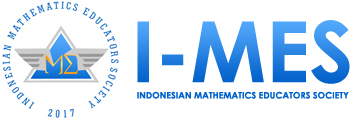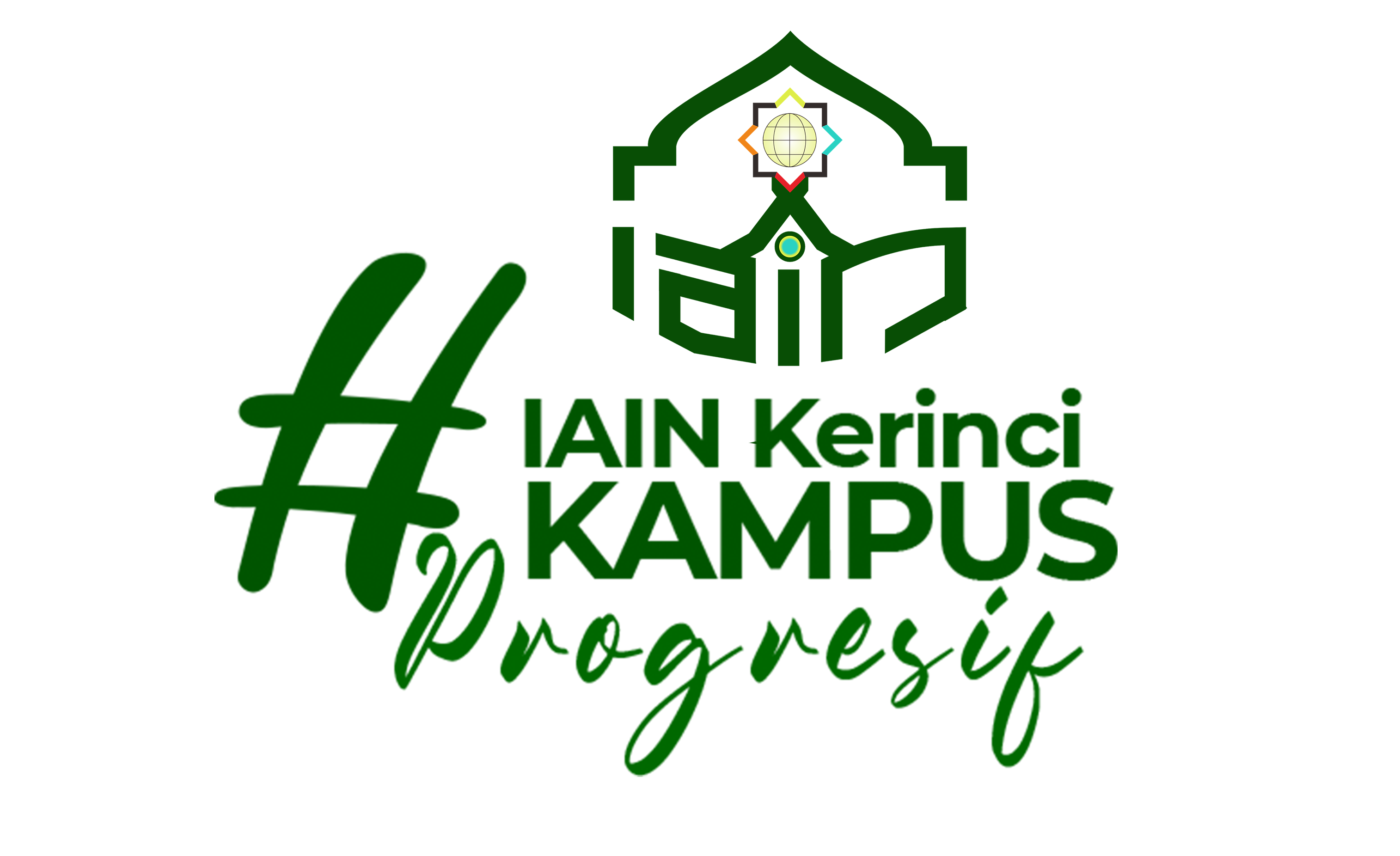Validity and Practicality of Geogebra Application-Based Mathematics Learning Tools to Train Visual-Spatial Intelligence
Abstract
An effective distance learning tool must be able to train students' spatial intelligence to help them develop visualization skills. Thus, this study aims to see the validity and practicality of GeoGebra application-based distance learning tools. This development research (R&D) uses a three-phase development approach based on Plomp Theory, which is divided into three stages: preliminary research, prototyping, and assessment. Validation and practicality questionnaires were used to obtain research data and analyzed with descriptive qualitative statistics. The results of the data analysis showed that the mathematics learning tools were evaluated with the "Very Valid" category. This is based on the assessment of three validators where the total average value of the validity of the lesson plan is 4.28 which is included in the "very valid" category, while the total average value of the validity of the LKPD is 4.24 which is also included in the category. In addition, the LKPD and lesson plans developed were also considered "practical". This is based on the assessment of three validators who produced an average final value of the RPP's practicality of 85, which is included in the "A" category, which means that the RPP that serves as a learning device can be used without modification, and the overall average value of the LKPD's practicality is 84.57, which puts it in the "B" category, which indicates that the LKPD can be used as a learning device with minor modifications. This means that Geogebra-based learning tools are reliable tools to assist teachers in developing learners' mathematical and spatial visualization skills.
Downloads
References
Arbi, Y. R., Sumarmin, R., & Putri, D. H. (2018). Development Module Oriented Science Technology Society Indue Science Literacy Assessment for 7th-Grade Junior High School Students in 2nd -Semester. IOP Conference Series: Materials Science and Engineering, 335(1). https://doi.org/10.1088/1757-899X/335/1/012089
Asri, A. S. T., & Dwiningsih, K. (2022). Validitas E-Modul Interaktif sebagai Media Pembelajaran untuk Melatih Kecerdasan Visual Spasial pada Materi Ikatan Kovalen. PENDIPA Journal of Science Education, 6(2), 465–473. https://doi.org/10.33369/pendipa.6.2.465-473
Bahri, S., Saputra, E., & Simamora, E. (2023). Development of Student Work Sheet ( LKPD ) based on Predict-Observe-Explain ( POE ) to Improve Students ’ Critical Thinking Ability in 2021 / 2022. ICoSTA 2022, eai(11), 2326230. https://doi.org/10.4108/eai.1-11-2022.2326230
Box, C. (2018). Formative Assessment in United States Classrooms: Changing the Landscape of Teaching and Learning. OECD/CERI International Conference “Learning in the 21st Century: Research, Innovation and Policy,” 1–181. https://doi.org/10.1007/978-3-030-03092-6
Dahal, N., Pant, B. P., & Shrestha, D. (2019). Integration of Geogebra in Teaching and Learning Geometric Transformation. Journal of Mathematics and Statistical Science, 5(September), 323–332. https://www.researchgate.net/publication/354776485
Dahal, N., Pant, B. P., Shrestha, I. M., & Manandhar, N. K. (2022). Use of GeoGebra in Teaching and Learning Geometric Transformation in School Mathematics. International Journal of Interactive Mobile Technologies, 16(8), 65–78. https://doi.org/10.3991/ijim.v16i08.29575
Dewi, L. (2021). Student Problematics in Thematic Learning. International Conference on Early and Elementary Education “Widening the Participation for Students Learning during the Digital and Pandemic Era,” 85–98.
Djalante, R., Lassa, J., Setiamarga, D., Sudjatma, A., Indrawan, M., Haryanto, B., Mahfud, C., Sinapoy, M. S., Djalante, S., Rafliana, I., Gunawan, L. A., Surtiari, G. A. K., & Warsilah, H. (2020). Review and analysis of current responses to COVID-19 in Indonesia: Period of January to March 2020. Progress in Disaster Science, 6. https://doi.org/10.1016/j.pdisas.2020.100091
Dunlosky, J., Rawson, K. A., Marsh, E. J., Nathan, M. J., & Willingham, D. T. (2013). Improving students’ learning with effective learning techniques: Promising directions from cognitive and educational psychology. Psychological Science in the Public Interest, Supplement, 14(1), 4–58. https://doi.org/10.1177/1529100612453266
Eviliasani, K., Sabandar, J., & Fitriani, N. (2022). Problem-Based Learning Assisted by GeoGebra to Improve Students’ Mathematical Understanding. AL-ISHLAH: Jurnal Pendidikan, 14(1), 85–98. https://doi.org/10.35445/alishlah.v14i1.1092
Filgona, J., Sakiyo, J., Gwany, D. M., & Okoronka, A. U. (2020). Motivation in Learning. Asian Journal of Education and Social Studies, September, 16–37. https://doi.org/10.9734/ajess/2020/v10i430273
Gani, A., Safitri, R., & Mahyana, M. (2017). Improving the visual-spatial intelligence and results of learning of juniour high school students’ with multiple intelligences-based students worksheet learning on lens materials. Jurnal Pendidikan IPA Indonesia, 6(1), 16–22. https://doi.org/10.15294/jpii.v6i1.9594
Goodwin, L. D., & Leech, N. L. (2003). The Meaning of Validity in the New Standards for Educational and Psychological Testing: Implications for Measurement Courses. In Measurement and Evaluation in Counseling and Development (Vol. 36, Issue 3, pp. 181–191). https://doi.org/10.1080/07481756.2003.11909741
Gumilar, Y. H., & Nandi, N. (2018). The Student’s Spatial Intelligence Level in Senior High School. IOP Conference Series: Earth and Environmental Science, 145(1). https://doi.org/10.1088/1755-1315/145/1/012094
Gusniarti. (2014). Applying Geogebra Software To Improve Students Of Learning Outcomes And Activities. International Seminar on Innovation in Mathematics and Mathematics Education 1st ISIM-MED, E(22), 82–93.
Hakim, A., Darsinah, D., Yuwono, H., & Katoningsih, S. (2021). Improving The Visual-Spatial Intelligence of Kindergarten Children Through Puzzle. International Conference on Early and Elementary Education “Widening the Participation for Students Learning during the Digital and Pandemic Era” Improving, 106–113.
Haleem, A., Javaid, M., Qadri, M. A., & Suman, R. (2022). Understanding the role of digital technologies in education: A review. Sustainable Operations and Computers, 3(February), 275–285. https://doi.org/10.1016/j.susoc.2022.05.004
Handican, R., & Setyaningrum, W. (2021). Developing a Mobile Game Using Scientific Approach to Support Mathematics Learning. Edumatika : Jurnal Riset Pendidikan Matematika, 4(1), 47–58. https://doi.org/10.32939/ejrpm.v4i1.607
Hossain, M. I. (2015). Teaching Productive Skills to the Students: A Secondary Level Scenario. A Thesis, 1–90. https://core.ac.uk/download/pdf/74352632.pdf
Jenna Gillett-Swan. (2017). The Challenges of Online Learning: Supporting and Engaging the Isolated Learner. Journal of Learning Design, 10(1), 20–30.
Kara, C., Coşkun, K., & Coskun, M. (2022). Development of Visual-Spatial Ability Test (VSAT) for Primary School Children: Its Reliability and Validity. Interchange, 53(2), 335–352. https://doi.org/10.1007/s10780-022-09462-8
Khoriyani, R. P. (2022). Meningkatkan kemampuan spasial siswa dengan pembelajaran melalui media visual. Educatioanl Journal: General and Specific Research, 2(3), 479–487.
Koesmadi, D. P., Wijayanti, A., & Rahayu, E. (2021). Pengembangan Media Zliqubo Untuk Meningkatkan Kecerdasan Visual Spasial Anak TK. WISDOM: Jurnal Pendidikan Anak Usia Dini, 2(1), 79–91. https://doi.org/10.21154/wisdom.v2i1.2829
Magdalena, I., Prabandani, R. O., Rini, E. S., Fitriani, M. A., & Putri, A. A. (2020). Analisis Pengembangan Bahan Ajar. Jurnal Pendidikan Dan Ilmu Sosial, 2(2), 170–187. https://ejournal.stitpn.ac.id/index.php/nusantara
Majerek, D. (2014). Application of Geogebra for Teaching Mathematics. Advances in Science and Technology Research Journal, 8(November 2014), 51–54. https://doi.org/10.12913/22998624/567
Manalu, D. B. (2016). The English Teachers’ Design of Lesson Plan Based on 2013 Curriculum. Jetafl, 2(2), 40–49.
Novelza, I. D., & Handican, R. (2023). Systematic Literature Review: Apakah Media Pembelajaran Mampu Mempengaruhi Hasil Belajar Matematika?. Griya Journal of Mathematics Education and Application, 3(1), 11-22.
Munna, A. S., & Kalam, M. A. (2021). Teaching and learning process to enhance teaching effectiveness: literature review. International Journal of Humanities and Innovation (IJHI), 4(1), 1–4. https://doi.org/10.33750/ijhi.v4i1.102
Murni, D., Jamna, J., Solfema, S., & Handican, R. (2023). Pemanfaatan Smartphone dalam Pembelajaran Matematika: Bagaimana Persepsi Mahasiswa?. Jurnal Cendekia: Jurnal Pendidikan Matematika, 7(1), 590-603.
Muslim, L. L., Verawati, N. N. S. P., & Makhrus, M. (2021). Validity and Reliability of Learning Tools Based on Discovery Learning Model to Improve Creative Thinking Ability and Concept Understanding. Lensa : Jurnal Kependidikan Fisika, 9(1), 10–18.
Nur, U., & Sulistyani, L. (2018). The Importance of Needs Analysis in a Language Curriculum Development : An Evaluation to 2013 Curriculum. UHAMKA International Conference on ELT and CALL (UICELL), November, 143–152.
Nuryasana, E., & Desiningrum, N. (2020). Pengembangan Bahan Ajar Strategi Belajar Mengajar Untuk Meningkatkan Motivasi Belajar Mahasiswa. Jurnal Inovasi Penelitian, 1(5), 967–973.
Nyoman Diah Krisna Larasati, N., Komang Tantra, D., & Gd Rahayu Budiarta, L. (2021). An analysis of lesson plan preparation through google classroom in junior high school. Journal for Lesson and Learning Studies, 4(1), 69–74.
Nzaramyimana, E. (2021). Effectiveness of GeoGebra towards Students’ Active Learning, Performance and Interest to Learn Mathematics. International Journal of Mathematics and Computer Research, 09(10). https://doi.org/10.47191/ijmcr/v9i10.05
Okongo, R. B., Ngao, G., Rop, N. K., & Nyongesa, W. J. (2015). Effect of Availability of Teaching and Learning Resources on the Implementation of Inclusive Education in Pre-School Centers in Nyamira North Sub-County, Nyamira County, Kenya. Journal of Education and Practice, 6(35), 132–141. http://ezproxy.library.yorku.ca/login?url=http://search.proquest.com/docview/1773227117?accountid=15182
Parwata, K. Y. L., & Sudiatmika, A. A. I. A. R. (2020). The Effectiveness of Learning Tools in Science Learning. Journal of Physics: Conference Series, 1503(1). https://doi.org/10.1088/1742-6596/1503/1/012049
Pepen, M. J. (2020). Evaluating learning objectives and expected student learning outcomes through the analyses of written examinations . A Case Study in the University of Papua New Guinea Open College . Institutional Developmen Journal, 3(2), 273–286.
Pratiwi, D. (2012). Designing A Lesson Plan. Oxford University Press, 1, 649.
Pujowati, Y., & Sufaidi, A. (2021). The COVID-19 Pandemic: Analysis of Large-Scale Social Restrictions (PSBB) Policies for the Community in Various Prevention Efforts. Jurnal Magister Administrasi Publik, 4494(2), 102–111. https://ojs.umrah.ac.id/index.php/jmap/article/view/3655
Purba, J. H. V., Fathiah, R., & Steven, S. (2021). the Impact of Covid-19 Pandemic on the Tourism Sector in Indonesia. Riset : Jurnal Aplikasi Ekonomi, Akuntansi Dan Bisnis, 3(1), 389–401. https://doi.org/10.37641/riset.v3i1.82
Rosadi, I. (2021). The Implementation Problematicsof Process Oriented Guided Inquiry Learning (POGIL) in Madrasah Ibtidaiyah. Jurnal Paradigma, 11(1), 169–186.
Rusliah, N., Handican, R., Laswadi, Deswita, R., & Oktafia, M. (2021). Mathematical problem-solving skills on relation and function through Model-Eliciting Activities (MEAs). Journal of Physics: Conference Series, 1778(1). https://doi.org/10.1088/1742-6596/1778/1/012016
Ruthven, K., Deaney, R., & Hennessy, S. (2009). Using graphing software to teach about algebraic forms: A study of technology-supported practice in secondary-school mathematics. Educational Studies in Mathematics, 71(3), 279–297. https://doi.org/10.1007/s10649-008-9176-7
Simarmata, J., Rahmi, S. Y., Recard, M., Hasan, M., Ritonga, M. W., Khalik, M. F., ... & Nasbey, H. (2023). Pengantar Literasi Digital. Yayasan Kita Menulis.
Suprapto, E., Setyansah, R. K., & Devina, D. (2021). GeoGebra Application Based Tutorial Materials to Improve Spatial Mathematics Abilities in Vocational High Schools. Jurnal Pendidikan Teknologi Dan Kejuruan, 27(2), 175–181. https://doi.org/10.21831/jptk.v27i2.39099
Suryaman, M., Cahyono, Y., Muliansyah, D., Bustani, O., Suryani, P., Fahlevi, M., Pramono, R., Purwanto, A., Purba, J. T., Munthe, A. P., Juliana, & Harimurti, S. M. (2020). COVID-19 pandemic and home online learning system: Does it affect the quality of pharmacy school learning? Systematic Reviews in Pharmacy, 11(8), 524–530. https://doi.org/10.31838/srp.2020.8.74
Sutarto, S., Sari, D. P., & Fathurrochman, I. (2020). Teacher strategies in online learning to increase students’ interest in learning during COVID-19 pandemic. Jurnal Konseling Dan Pendidikan, 8(3), 129. https://doi.org/10.29210/147800
Syafitri, R. A., & Tressyalina. (2020). The Importance of the Student Worksheets of Electronic (E-LKPD) Contextual Teaching and Learning (CTL) in Learning to Write Description Text during Pandemic COVID-19. 485(Iclle), 284–287. https://doi.org/10.2991/assehr.k.201109.048
Taniredja, T., & Abduh, M. (2016). Pedagogical, personality, social and professional competence in correlation with teachers’ performance (Correlational study of junior high school teacher at SMPN 3 Purwokerto). The 2nd International Conference on Science, Technology, and Humanity, 264–272.
Triutami, T. W., Novitasari, D., Tyaningsih, R. Y., Elvierayani, R. R., & Lu’luilmaknun, U. (2021). Visual-spatial intelligence level of junior high school students: What difficulties are experienced by the students. Journal of Physics: Conference Series, 1776(1). https://doi.org/10.1088/1742-6596/1776/1/012033
Vágová, R., & Kmetová, M. (2019). GeoGebra as a Tool to Improve Visual Image. Acta Didactica Napocensia, 12(2), 225–237. https://doi.org/10.24193/adn.12.2.18
Wahyu, S., Rizal, F., & Syah, N. (2021). Teacher Performance Analysis in the Learning Process. Journal of Education Research and Evaluation, 5(1), 67. https://doi.org/10.23887/jere.v5i1.30758
Wijaya, Y. Y., Sunardi, Slamin, Margaretha, P. M., & Wijayanti, N. P. A. A. (2019). Senior high school student’s visual-spatial intelligence according to van hiele geometric thinking theory. IOP Conference Series: Earth and Environmental Science, 243(1). https://doi.org/10.1088/1755-1315/243/1/012055
Yerizon, Y., Dwina, F., & Tajudin, N. M. (2021). Improving Students’ Spatial Ability with GeoGebra Software. Universal Journal of Educational Research, 9(1), 129–135. https://doi.org/10.13189/ujer.2021.090114
Copyright (c) 2023 Rezkiyana Hikmah

This work is licensed under a Creative Commons Attribution 4.0 International License.



























 JDIME: Journal of Development and Innovation in Mathematics Education (e-ISSN
JDIME: Journal of Development and Innovation in Mathematics Education (e-ISSN 
